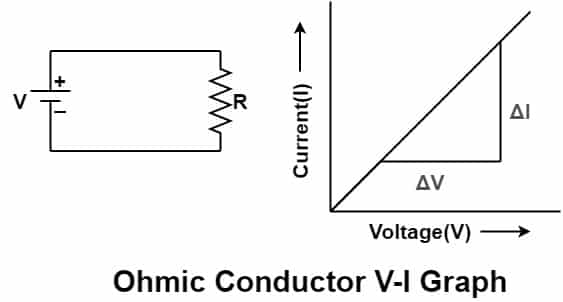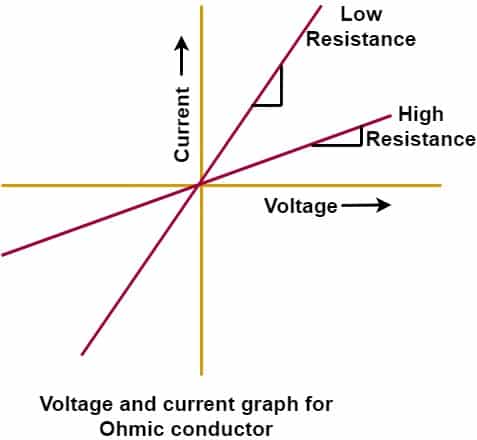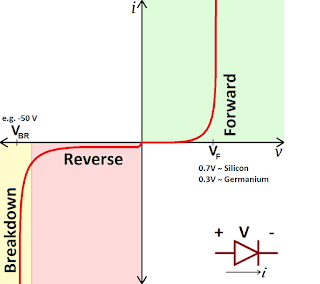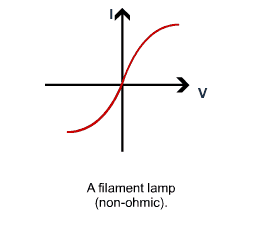Ohmic Vs. non-Ohmic Conductors
The difference between ohmic and non-ohmic conductors can be found by knowing the relationship between voltage and current. When the voltage is applied across a conductor, the electrons start moving from high potential to low potential point.
The flow of electrons causes the flow of electric current in the opposite direction of electrons flow. The magnitude of current flowing in the circuit depends on the applied voltage and the resistance of the circuit.
The current remains relatively constant for the particular magnitude of applied voltage if the resistance of the circuit remains unchanged. The difference between ohmic and non-ohmic conductors is that Ohmic conductors have a linear relationship between voltage and current. In contrast, non-Ohmic conductors do not have a linear relationship between voltage and current.
The conductor, whether ohmic or nonohmic, can be verified with Ohm’s law. Ohm’s law states the relationship between voltage, current and resistance.
According to Ohm’s Law
I α V
I = V/ R ——–(1)
Where,
V = Applied Voltage
I = Current
R = Resistance of the circuit
Equation(1) can be plotted in a graphical form below.
V-I Graph for Ohmic Conductor

The slope of the straight line is 1/R. The slope remains constant if the resistance value does not change in an electrical circuit. The slope of the line in the positive and negative quadrant is constant. A low resistance component has a more slope line, and a higher resistance device has a steeper line on the Ohmic conductor graph.

Definition of Ohmic Conductor
The conductors that follow the above-given voltage and current relationship are called the Ohmic conductors. In other words, the conductors that obey the Ohm’s law are called the Ohmic conductor.
Definition of non-Ohmic Conductor
The conductors in which the current does not flow in proportion to the increased voltage is called the non-ohmic conductor. In other words, the conductors which do not obey the Ohms’s law are called non-Ohmic conductors.
Examples of Ohmic Conductors
An example of an Ohmic conductor is the resistor. The current flowing through the resistor is directly proportional to the applied voltage and voltage across the resistor, and the current flowing through it has a linear relationship.
The resistance of the conductor depends on the temperature, and the resistance increases with an increase in temperature according to the temperature coefficient of the resistance. If the current flowing through the resistance increases above its current carrying capacity, the resistance gets increased because of the rise of temperature. The increased heat can cause the resistance to become non-Ohmic.
Examples of non-ohmic Conductors
The conductor is non-Ohmic if the current flowing through the conductor and the voltage across the device does not have a linear relationship. The non-Ohmic conductor does not obey Ohm’s law. Examples of non-Ohmic conductors are filament lamps and semiconductor devices like diodes, transistors, thyristors, etc.
V-I Graph for non-ohmic Conductors
In the case of the diode, the current keeps increasing, but the voltage drop across the diode does not increase. That is why the diode is a non-Ohmic device. The characteristics of the diode are given below.

In the case of the filament lamp, if the voltage is increased, the current flowing through the lamp does not increase beyond a particular value. Therefore, the filament lamp is non-Ohmic. Voltage-current characteristics of the incandescent lamp are given below.

The bulb resistance has a positive temperature coefficient. The resistance of the bulb increases with an increase in the temperature. The filament resistance changes with an increase in the current due to temperature increase. The filament resistance does not remain constant with an increase of current. Therefore, the incandescent/filament lamp does not obey Ohm’s law, and a filament lamp is non-ohmic.